The ’62 Skylark I spied in Maine is interesting for a variety of reasons, its generous specification being among of the more notable of these. A compact car with power windows and air conditioning wasn’t common in 1962, and we go out of our way to point out similar compacts and ponycars so-equipped through the early ’80s. As JP Cavanaugh noted in the comments this morning, it wasn’t until 1972 that he saw an A/C unit outside of a high-end sedan, and it’s only over the past ten years that virtually every car features it as standard (though there are still a handful of holdouts). I remember plenty of strippers through my youth which left drivers steamy behind the wheel, but I suspect this will be a much more interesting question for our more seasoned readers: what’s the first “modest” car you remember seeing with air conditioning?
As many recall, it wasn’t until 1968 when AMC offered standard air conditioning on the Ambassador, at a time Cadillac charged extra for the feature. While Japanese carmakers made a name for themselves by offering a lot of value for the money, it’d be a while until their HVAC systems matched those from American manufacturers, and mainstream European carmakers often lagged even further behind.
Some air conditioners even remained separate from the rest of the ventilation system through the ’70s, sometimes requiring expensive dealer installation. In such a context, we must consider the add-on unit found in today’s 52-year-old Buick to be very thoughtfully designed and even decorative.
Compare that to this unit found on a ’69 Volvo 1800S. It’s easy to overlook what a large device air conditioning actually is if one didn’t live through the era.
Fast forward five to ten years, and powerful, fully integrated units began (finally) flowing out of European manufacturers. The degree to which some manufacturers used to highlight these systems is a bit strange outside a historical context. After all, we’ve been living with systems like these for about thirty years, and these days, any physical link to heat blending and air distribution has been tossed aside.
This lowly Fiesta is a good representation of what HVAC controls look like in 2014, banished beneath infotainment, with everything operated electrically. Many of us forget just how much we take this most fundamental provision for our comfort (and even safety) for granted, let alone all the engineering involved in making it both effective and unobtrusive. Along with steering and braking assists, it’s possibly the convenience closest to being considered a necessity, even though so many of us went without not long ago (I’d even rank power steering below A/C). For those who can remember such times, when did you finally come to expect air conditioning readily available in your ride?










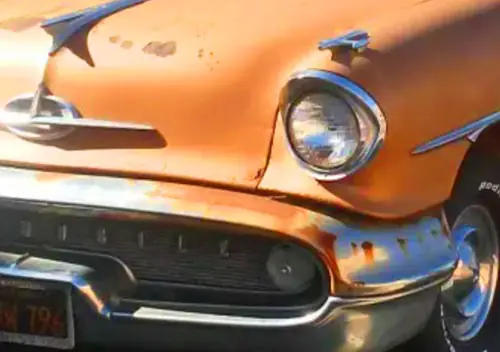
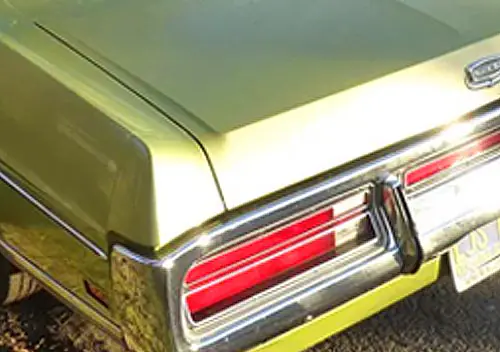


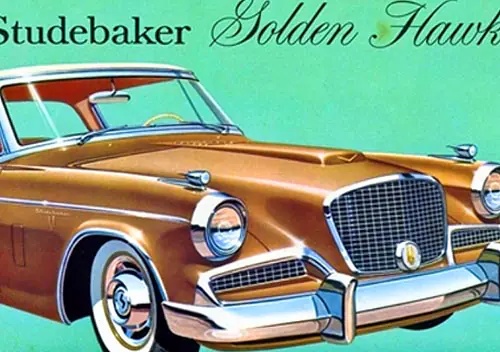
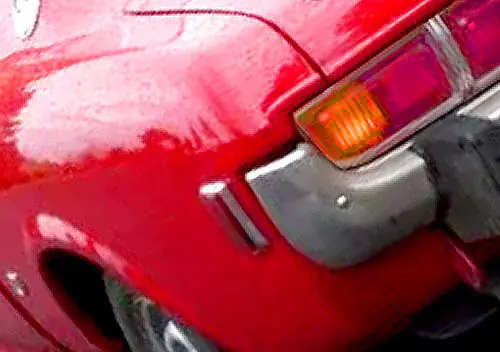

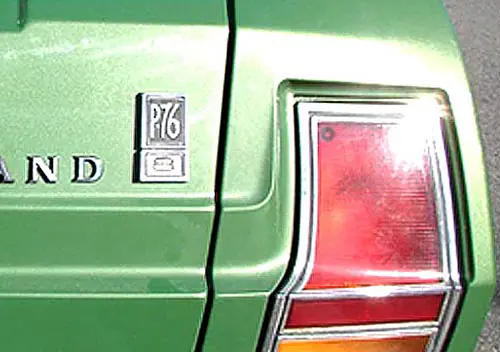
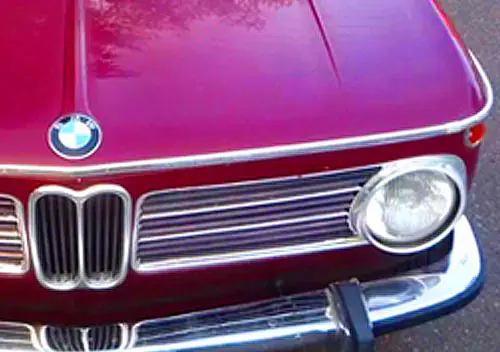
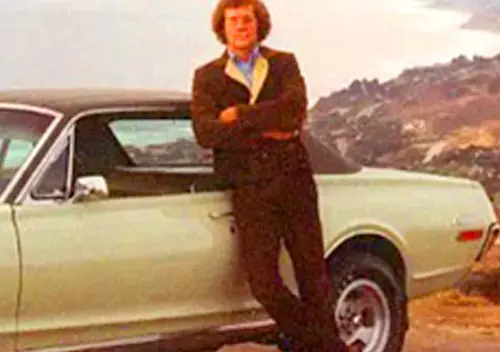


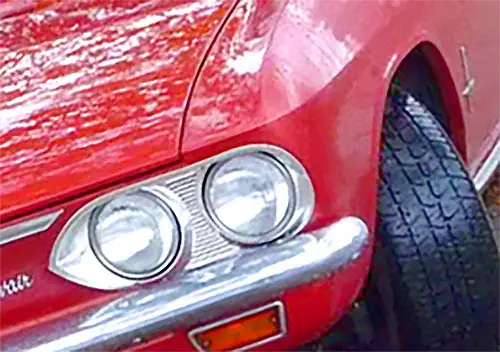


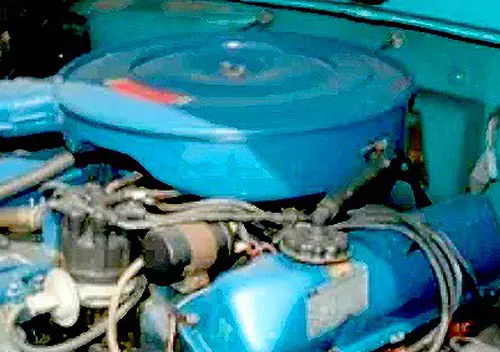



Not factory, but my Dad installed an aftermarket Frigiking unit in our ’69 F-100. Our ’68 Country Squire LTD wagon had air, but nothing earlier than that comes to mind of the cars I remember from my youth.
Every new car I’ve purchased over the years had a/c, save one: the 1990 Honda Civic 3-door Hatch, which was a base model that I requested without *any* options. No a/c, no radio, no pin stripes, no dealer prep (I had to scrub the cosmolene off the wheels myself). Bought an aftermarket radio right after purchase, and had the dealer put in a/c after a couple years when we could afford it (was cheaper than if we had bought it installed new).
Mom and dad’s first car with A/C was their 65 Comet. It was a dealer option and hung under the dash.
Their first car with integrated A/C was the 69 Chevelle, and I remember those eyeball vents, after that A/C was in every car they bought.
My friend who lived up the street from us had a father who was a retired colonel and worked at the nearby army depot, so he was a double-dipper. My friend’s mother was the head librarian at the local university. With that level of income, they bought new cars regularly, and when they did, they were always heavily optioned.
Their 1971 Chrysler Newport sedan and 1972 Ford Pinto Runabout are the first “regular” cars I can recall that had factory air.
My first brand-new car was a 1988 Honda Civic DX sedan. I definitely wanted air conditioning, but in those days it was a dealer installed option on Hondas. I bought the car in the fall of 1987, soon after that model debuted, so I had to take it back to the dealer about two weeks later to get the air conditioning installed!
My father traveled in his work, often racking up 35,000 miles a year in the Virginia heat and humidity. That’s why he had aftermarket air fitted to his 1956 Ford Country Squire. As for my own cars, I did without until I had A/C added to my ’75 VW Dasher. Boy, was that an unfortunate combination, a 1471cc engine lugging around an A/C compressor. Passing slow traffic on an old three lane highway would give you religion, that’s for sure.
Well, considering I’m in my early-20s, most cars I remember from my childhood had air conditioning. Although my home’s central air is a luxury turned necessity I’ll never again be able to live without, I honestly don’t use the A/C in my car that much. It sucks gas way to fast, and quite frankly I prefer open air cruising with the windows down and moonroof open, even at high speeds. I only turn the A/C on when its unbearably hot or on a long highway trip. My threshold is about 85 degrees, then I’d flip it on. Considering this rather comfortable summer, I probably used it less than 10 times.
I grew up the tropical north of Australia, and we never had A/C in the car. (Neither did we have it in the house nor at school, only ceiling fans).
In the 70s A/C was something you only saw on big luxury cars, even in that torrid climate.
Reminds me of living in Charters Towers in the ’70’s … no air at all, fans at school. You would think nothing of driving 2000 miles with the car windows open for air. Took days for the ringing in your ears to stop. First car I remember with air was a Falcon taxi on the Gold Coast in 1970. Now you won’t have anything, house or car, without air.
KJ
Mt Isa boy here, no A/c in cars for us until the second half of the ’80s. The ringing in the ears is very familiar…
Other than a couple window units pressed into service on the worst days of late August, our 96 year-old farm house has no central air – only ceiling fans and lots of windows… we manage to manage. (c:
Yeah the house I lived in up until 3 years ago was a late-nineteenth century Victorian with no air conditioning of any form. The wiring (which hadn’t been upgraded since my grandparent purchased it in 1958) was so old that it couldn’t safely support a window unit. I spent many days and nights downstairs in the family room, the one room with a ceiling fan. Central air was a welcomed plus to the new construction we moved into.
Mrs. JPC would leave me if I moved us into a house without a/c. 🙂
Everywhere I lived from birth (1980) through 2012 had central air with one semi-exception–a 500 square foot apartment that had a hotel-style wall unit in the living room. Given the compact floor plan and lack of hallway, it worked well enough to behave like central air.
In 2012 when we moved to Richmond, we leased an apartment in a 90 year old building. Window units in the living room and bedroom, so they stay cool, but neither one does a good job of circulating air down the nearly 30 foot long hallway (all the rooms are in a row with a side hall) and all the windows, save two transoms, are painted shut. The poor ceiling fans can’t keep up in the non A/C rooms. I miss the central systems!
Same with cars – the question loses its relevance for those of us below a certain age and living in certain climates. In the south/mid-Atlantic USA, the summers are hot and humid enough to make it an expectation. The only car my family owned in our lifetime that didn’t have factory air was the strippo ’83 Escort my Dad drove in the late 80’s. (He always said it had 255 air conditioning–2 windows down at 55 MPH.) I’ve owned 2 cars where the A/C no longer worked, but the system was there from the factory.
Does using the A/C really use more gas? I’ve read studies that show the added drag of having the windows open offsets any savings of not having the A/C compressor run.
A/C reduces mileage a little more than open windows, even at highway speeds.
Growing up, our 72 Impala wagon and it’s vega replacement didn’t have it. Dad’s 74 Electra 225 did as did mom’s 77 Caprice – on both it crapped out after a couple or three years and were never fixed as the folks hardly used it anyway. This isn’t a dig at GM, I’d say their short life was simply lack of use and needing the freon topped up. Everything after that has had it.
My dad’s 1975 F250 Ranger supercab was the first one I can remember. It was an XLT model with spiffy brocade seats, a/c, AM/FM/8-Track and cruise. No power windows though.
Heilige Scheiße, that’s the same thing I was about to say! A ’75 F-250 Ranger XLT SuperCab, in Midnight Blue Metallic. It had jump seats in the back, which was about the awesomest thing for a 5-year-old, to sit sideways. We had Indian blanket seat covers on the front, though, so I never got to see the brocade seats. Back seats were vinyl, of course.
Growing up in northern Indiana in the 60s, I straddled from the era where it was very rare to where it was nearly universal, probably 1966-76. But it was always in big expensive cars, or at least flagship models like the 66 Electra of some friends or the 69 LTD of my Dad’s. Granddad’s 62 Cadillac, as well.
I do not remember a single mid size or compact with it before the 70s. The neighbor lady next door had a 68 GTO that might have had it, but I am not really sure, despite several rides in it. In my world, smaller cars tended to be “second cars” that were not as nicely equipped as the family’s “good car”.
Mom’s 72 Cutlass Supreme and a neighbor’s 72 AMX were the first smaller cars I actually remember with air.
Your memory meshes well with mine. My first car with factory A/C was the 72 Ford Maverick LDO bought new in Fort Wayne. Around that time factory A/C began to be far more prevalent in mid- and lower-range cars. I recall that many of the new Mavericks and Mustangs on the lot at Jerry Watson Ford in Fort Wayne were equipped with A/C. My best friend in Fort Wayne had a new 69 GTO with factory A/C.
Texas, Florida, and California led the way with both add-on and factory A/C in all kinds of cars in the 50’s. We vacationed a lot in Florida in the 50s and as a kid I remember being fascinated by seeing so many cars with add-on units, and then there were the many Lincolns and Cadillacs with the plastic tubing running through the rear package shelves.
Funny you mention Jerry Watson Ford. That was where Dad bought the 66 Country Squire that we saw yesterday.
My Dad bought our 65 Thunderbird at Jerry Watson Ford.
I guess I grew up lucky, as every car I remember my parents owning except one had a/c. When I was born they had a ’67 LTD coupe, bought new. That was traded off when I was 3 years old for a ’72 LTD.
In late 1973 my Dad was transferred from St. Louis to Houston, and he needed a second vehicle. That ended up being a ’74 Ford Courier. No a/c. IN HOUSTON. He suffered through eight summers in that thing (the white vinyl seats and huge air ducts under the dash did help) before buying an early model ’83 Ford Ranger, (they came out in the spring of ’82) with a/c of course! The LTD was traded off in ’78 for a Malibu Classic coupe that would eventually become my first car.
The earliest car I know of in my family with a/c was a ’62 Olds 88 that my paternal grandparents had. I have no recollection of it as they traded it for a ’69 Delta 88 (also with a/c) the year I was born. At age eight I was present at the dealer when they traded it for a ’77 LeSabre. Later that year my maternal grandparents bought their first vehicle with air, a 460-powered loaded to the gills F-250 XLT. After a few months of 8 mpg commutes, Grandpa traded the F-250 for what would be their last car, a ’78 Thunderbird.
This talk of early factory air brings to mind a humorous memory.
In all the years my father ran the car dealership, the customers he dreaded the most were school teachers. It probably had a lot to do with how underpaid they were in the pre-union days, but teachers would fight tooth and nail for every nickle on a car deal. The salesman at the dealership probably spent twice the amount of time closing a deal with a schoolteacher, and made less profit than the average customer. Dad never really stereotyped customers much, but he always believed that “schoolteachers are cheap bastards.”
This was a story that always stuck with me, if only because it was kinda out of character for dad. Fast forward three years after dad’s left the business (1968) and I’m doing summer classes at the University of Pittsburgh at Johnstown campus. One of the professors there has just bought a brand new AMC Ambassador. I’m curious, I’ve read the ads (they were making a REAL big deal of standard air conditioning at the time), I take a look into the car.
To see a large, clunky, aftermarket air condition slung under the dashboard. Now, at this point in time, aftermarket air conditioners weren’t rare anymore, but what about the AMC ads? Fortunately for me, the window sticker for the car was still laying in the back seat. And there it stuck out: “Air conditioner delete, $250.00 credit.” Yes, you could get an Ambassador without air conditioning, but you had to order it special.
OK, that’s half the story. I noted the air conditioner brand, a did a little research locally to see what an installed unit cost.
$245.00. He gave up the nicely integrated unit to save $5.00.
OK dad, point made. Schoolteachers are cheap bastards.
Good one.
Nowdays, replace schoolteacher with Indian … (not native American)
Um, really?
“… the customers he dreaded the most were school teachers. It probably had a lot to do with how underpaid they were…”
That, and they deal with someone trying to pull a fast one on them Every. Single. Day. Salesmen aren’t as sophisticated as you think, the average kid trying to get away with having blown off their homework uses the same techniques.
It’s possible the car the dealer had in stock had no AC (maybe someone screwed up when ordering or a deal fell through) but the teacher wanted it, so to get rid of it the salesman told him, no problem, we will install air and the price will be about the same as one we would have to order. But I like your thinking better, after all today that’s more like around 30 bucks.
I believe our first factory air was in mom’s 1963 Impala(? – or whatever the name was for the trim level that year) station wagon. Mom’s car was used for the annual July vacation, and dad was sick and tired of putting up with mom and her two sisters constantly fighting over whether the windows would be up or down.
My first car with air way my ’79 Monza, my third modern car.
The first car I drove that had a/c was a Ford Maverick.
The one pictured here.
My dad’s 69 Dodge Monaco Brougham was the first car in our family with a/c, but after that he never had a car without. My only a/c-less car was the 66 Chevy Impala convertible I bought from my sister as my first car.
Not exactly a direct answer, but in 1967, our French teacher at Loyola showed up with an air-conditioned 1965 VW bus! It sat on the roof in the very back, inside a housing that was clearly built to integrate with the bus’ roof, not some back-yard hack job. And there were ducts on the inside ceiling to distribute the air. It was almost exactly like the city buses that used to have a big hump on their tail ends.
Given that this 1500cc bus had like 45 net hp, turning it on was very noticeable. Undoubtedly someone was building these units for VW buses.
Wow, turning on the compressor at speed must’ve had the same effect as yanking on the parking brake!
I had air conditioning installed in my 69 VW Beetle at College Mall Volkswagen in Bloominginon, IN @ 70-71. It was a unit made by Heatransfer in San Antonio, Texas. From the patent information, this is basically how it worked:
“In accordance with the present invention, a reversible evaporator-condenser unit, including necessary coils, valving, and blowers, is mounted compactly in a casing which fits in and rests on the slightly modified flooring in the compartment provided in the Volkswagen body just behind the rear seat. The control console is mounted on the flooring tunnel in convenient position for access by the driver and is connected to the evaporator-condenser motors and the source of electrical energy by means of suitable cabling which runs along the central tunnel in the flooring. The compressor is conveniently mounted on the rear engine, and a hose cluster connects the same to the evaporator-condenser unit. The hoses are provided with quick connect fittings of the type provided with check valves so that the evaporator-condenser unit can be safely precharged in the factory or at any time prior to installation.”
http://www.freepatentsonline.com/3595029.html
It worked well and kept the car icy cold; however, the power loss was significant.
Heattransfer was later involved in an interesting anti-monopoly lawsuit against VW that you can read about here:
http://openjurist.org/553/f2d/964
Funny story about College Mall Volkswagen in Bloomington. The first gas shortage in 73′ my parents went to look at a new Beetle. My 12 year old self was so in hopes they would get the Beetle but Mom would not give up her Olds.
When I got my first job at a VW dealer in 1974 we had parts catalogs for AC going back to 1962 for all models. The brands were VPC (Volkswagen Products Corporation), and DPD ( don’t know what the letters stood for, but was manufactured in Texas). Parts for both could be ordered through regular VW ordering process, and kits could be ordered for dealer installation. We did install a few on new cars. We also had a Behr Air catalog, a few had these installed aftermarket. We had to get parts for these from a Behr Air AC shop, we would give them the part number. In Southern California there were quite a few cars equipped, it was rare for them not to just be removed as the cars got older, but some people did keep them functional.
The DPD mystery has been solved, thanks to Caguys link to the Delanair VW lawsuit. Stands for the company’s founder, Don P. Dixon of Texas. Thanks!
Working on the line back in 72-73, some of the senior guys had an ” A/C job”. Only about 30 percent of the cars had the C60 or C61 option.
Back then I figured that had to be the ultimate job to have.
My neighbor’s 1962 Rambler Classic Cross Country (wagon) had factory air conditioning. The center vents actually came out the top of the dashboard and had flaps over them that directed airflow rearward or could be closed completely. You’ll see them in the picture (not of the actual car, which was gray and had the pushbutton “Flash-O-Matic” transmission).
He later gave the car to my older brother who drove it through his first couple of years in college.
He also had a 1968 Dodge Monaco with Airtemp air conditioning. Our first family car with air was our 1970 Buick Estate Wagon, though my dad had a 1969 Ford Country Squire company car with it as well.
My parent’s 1964 Plymouth Valiant had factory AC, which was their first car with AC and I was told it was unusual on such a humble ride. Subsequently at least one fo the family cars had air, except for a brief period in 1974 when when we were between “first” cars and making do with the BMW 2000
Growing up in the Deep South, just about every car I knew had A/C, even from my earliest memories of cars from the late 60s/early 70s. I know anecdotally that the first car my parents had with A/C was a 1962 Mercury Comet. At the same time they also had a hand-me-down 1958 Buick from my grandmother that did not have A/C, and so they really gushed about the Comet with its cool air in humid New Orleans. In the early 60s they also got wall units in the house, so A/C was clearly becoming much more prevalent everywhere. They never got another car after that without it, and likewise all the houses I knew had some form of air as well. I was so used to all cars having A/C as a Southern kid that I actually thought it was really weird not to have it. My Great Aunt in Massachusetts had a series of Plymouths in the ’70s without air (Satellite, Volare), and I couldn’t get over it.
All mine have had factory air. 1968 Sport Satellite being the first. Bought used in 1973. The first in the family was a 1973 Impala bought new. Dad had aftermarket installed on the car he used a week or 2 later. A 1965 Valiant. Seems like most folks in GA, TN and AL where I grew up were getting AC in cars they bought in 1965 and later, except Dad. He bought a new Fury II with out AC in 1967. The first normal car I remember with it was my best friends Dad in 1960 having a 1960 Chevy Wagon with Factory Air. The surprising thing is I think it was the Bel Air trim package and not the Impala.
My first was a 1968 Plymouth Valiant Signet. It was the Chrysler factory unit, with a slim vent housing integrated below the instrument panel, but it had the cycling-compressor temperature control typical of aftermarket units. On Darts and Valiants, at least, the reheat system, where warm air got mixed with cold to adjust temperature, was yet in the future.
The 1968 Signet version even had a color-keyed pad around the bottom of the air conditioning vent, matching the dashboard pad! That got dropped later.
Our FAMILY’s first was a 1963 Cadillac 62 4-window hardtop. But that was a “high-end sedan; the Valiant wasn’t.
First memories include a neighbor’s 1960’s Electra, other neighbor’s ’57 Caddy, and grandfather’s heavily optioned late 60’s Chevy sedan (Caprice?)
My immediate family’s first foray into A/C was when my Dad stepped up and (gasp!) checked the box when ordering our ’72 K5 Blazer. As I recall it cooled as though it was for the volume of a pickup cab, not the volume and extra passengers on the Blazer.
Probably one of the family’s 1980s Saab 900s or Aunt’s 1980s Mazda MX-6. One of those Saab’s was a stripper model.
Course almost every vehicle in my family with AC had it fail in 10 years or less and usually we did not fix it.
First in our family was a 67 Pontiac Catalina wagon optioned with air (not under the dash), electric windows, electric seat adjustment, FM radio and tinted window (subtle, but effective), all factory with the biggest engine available.
Dad was a school teacher.
The first car I drove that had A/C was a 1986 Toyota MR2. The air conditioning didn’t work, it was there.
The first I remember was one year in the mid ’60s on summer vacation going somewhere with a friend in his family’s 1964 Pontiac Safari(?), which had A/C. What a relief! I think this wagon was similar in trim level to a Bonneville.
First ordinary car I had with AC was a 71 Toyota Corona 1600 Manual it a dealer fitted under dash affair with a piston compressor, turn it on full blast at 60mph you were instantly cooled and doing 50mph, the car did 41mpg imp with the AC off barely 30 with it on.
The first cars I remember seeing with factory integrate AC was the HQ Holdens identified easily by 3 vents in the dash pad regular cars had two a very rare option that made the L/H bank sparkplugs near impossible to acces on the V8s thanks to the enormous compressor.
That Fiesta must be the 3 cyl turbo “hfe”. Check out the photo of the Saab. The 9 o’clock position on the vent direction control is a setting for cool air to blow out the dash vents and warm air through the floor vents. Very refreshing on a long winter drive.
We had several used 70s cars (71 Satellite, 72 Montego, 74 Volvo wagon) that were equipped with air conditioning that had quit working and never got fixed due to the expense, and we lived in the south so it was pretty brutal. Me and my brothers fought to ride in my aunt’s new 78 Volare with ice cold air. Finally, my Mom got a good job and got a new 1982 Delta 88 with gloriously cold air conditioning.
Maybe its because its the era I grew up in but I like the slide controls of 70s/80s-era American cars and I hate dual zone AC on modern vehicles, it never seems to work right.
A couple of years ago I took my kids on a 6 hour road trip in the middle of summer with 90+ degree days in my 1969 Charger with black vinyl interior to show them what it was like when I was a kid. They wont be doing it again and neither will I.
I wish I had dual-zone AC on any of my cars. My wife and I have an unspoken battle on road trips were we each try to adjust the temperature knob up or down while the other isn’t paying attention, as she likes it considerably warmer than I do. Even if it didn’t work perfectly, it would be better for spousal harmony. 🙂
The first car I actually remember riding in that had A/C was a friends Dads 68 Chevelle.
He was an over the road salesman and received a new company car every two years.
Getting a ride home in this haze green Chevelle I still remember how COLD the interior was on a hot humid July night in 1968.
All of my immediate family’s cars were non-AC until my mom bought her ’95 Neon (against my college-kid recommendation). Her friend Pat had had A/C for as long as I can remember, she having bought high off the General’s hog – Buick/Olds B wagons and later Cadillacs. Friends’ parents had everything from a decade-old and miraculously unrusty Hornet Sportabout to a K-car LeBaron, none of which I can remember the A/Cness of.
Looking for costs, I found this 1958 ad. How does the (“as low as”) $369 compare with typical factory-A/C back then?
In 1965 a full size Chrysler convertible was about $5000 and A/C was a $500 option.
I saw lots of factory air on 1960s cars when I was growing up, but those weren’t the cars we owned. Tucson (and any desert city!) were hotbeds of A/C back before it became common everywhere. Cadillacs, Oldsmobiles, and Buicks all gave themselves away through the 1956 model year; if they had factory A/C, there were the telltale scoops on the rear fenders–same thing with Chrysler products. Everything changed when the apparatus could all be up front.
In the 60s I saw lots of Chevys and Pontiacs with factory air; it was harder to identify Fords through the early 60s because Ford’s A/C units looked like aftermarket units hung under the dash.
My brother, though, bought a 1965 Corvair Corsa, yellow exterior and black vinyl interior, without A/C. It was absolutely horrible in August! On the other hand, he was being transferred to North Dakota.
I had a 1962 Plymouth Valiant that had Chrysler aftermarket A/C when I bought the car in 1971. It wasn’t very good, though, and the car was prone to overheating.
My first car with factory air was my 1970 Torino Brougham that I bought in 1978. That was my introduction to A/C that actually worked well and didn’t make the car overheat. However, the piston compressor rumbled annoyingly. In 1982 I bought a 1977 Honda Accord that had factory air; it wasn’t quite as good as the Ford A/C, but at least it was A/C. Everything we’ve had since has had A/C. The climate control in our Camry Hybrid is as good as anything I’ve ever seen, and because it’s electric, it keeps cooling even when the engine is stopped. Nice.
I don’t know why I left Arizona out of my comment above. My cousins in Arizona had a new 57 Oldsmobile with factory A/C when they visited us in IN at the time. They were the first in the family to buy an A/C equipped car and never bought one without it after the Olds. In high school one of my friends moved to Phoenix in 67. She had an aftermarket A/C unit installed in her 66 LeMans before the move. When I visited her in 72 on my way to move to CA, I recall the metallic blue paint bleached out from the sun, the seats and dash cracked, and blinds installed on the windows. Arizona sun is brutal!
I grew up in L.A. (Lower Arkansas) where summers are long and HOT. So, A/C was quite common early. Our first car with it was a 64 Galaxie, with the unit hung under the dash. I think Ford put A/C in dash in 65, at least in the LTD. One of our friends who traveled in sales had a 60-62 Falcon with it. No idea if factory or aftermarket.
Wow, we didn’t get A/C in a family car until my father was literally forced to take it in a company car in 1975. That year he got a Malibu Classic, instead of a full size, because by that time Ingersol-Rand was finally leasing cars instead of the former practise of outright purchase. I guess the car was worth more with the A/C, than a full size without. I recall him being very angry that he had to accept a car with A/C, power windows, power locks and a whole host of other options that he thought would fail before he was done with the car.
We begged him to get A/C with his cars after that, but nope, the next two were full size strippers again, though, a Bel-Air sedan followed by a Bel-Air wagon, with no options, just like he liked them. The wagon even was a radio delete, and he installed a Muntz 8-track for his long highway drives.
As an aside, he was so cheap when ordering his company vehicle, that in 1972 he ordered his full size Biscayne with the 6 cylinder because it was better on gas, or so he thought. Yup, there we were, surrounded by neighbours with Parisiennes, 98’s, New Yorkers, Marquis’, and we’ve got an orange on white vinyl Biscayne with a 6. I still shudder at the thought of that car, towing our tent trailer and all the luggage required for 4 people struggling for about 60 seconds or more to get to 60 mph.
Finally, after he and my mother moved to Calgary, she made a stink about no A/C, and his Fairmont wagon had it, and every car since. They always used the company car to do long distance trips, as her cars, at the time a Fiat Spider, followed by a Mazda GLC were sporty and weren’t suited for A/C or her style of hooning. He finally discovered A/C was better for highway driving.
My parents purchased a 1973 Torino when I was less than a year old. It had factory air. The 1970 F100 they had did not have air. Every car they have purchased since has had air.
The Galaxie does not have air, however, opening the vent windows only along with the air vents provides a very nice amount of cool air, even on 90+ Fahrenheit days. Thankfully it is a lighter color; it would likely be a different conclusion if the car were a dark color.
Growing up in the Northwest in the 50s and 60s air was pretty much unheard of. Even the luxury car buyers didn’t bother adding the option then. Working in a gas station in the mid sixties I serviced a late 50s car with air (definitely from out of state). Raising the hood it was like a giant foam tumor had invaded the passenger side of the engine compartment. First a/c in a car of my own was in a 79 Volare wagon. Regardless of the reputation of those cars the air still blew ice cold when I sold it 8 yrs later.
First car with A/C was a 1976 Oldsmobile Cutlass Cruiser wagon. I was 7 years old and my parents had just traded their 1974 VW Thing. So not only the did the Oldsmobile have AC, it had glass windows and no drain plugs in the floor, hahahhah!
Since ’76, everything I’ve been in has had AC and I would have it NO other way, whether I am in my native Florida or any other locale.
BB
First AC car is the first car I remember, my grandfather’s 1956 Buick. I was around 5 or 6 years old at the time, 1960. One thing I remember is he had a small piece of aluminum made that would cover the far left vent so the cold air would not hit his left knee. Next he bought a new 1961 Buick Wagon with AC and did not have a vent problem. My first new car was a 1971 Plymouth Cricket, I had to buy an aftermarket Mark 4 unit and special order a mount and drive kit for compressor. It took a weekend but I installed it myself with friends help. Had it charged at an Amoco service station, I did not yet drill holes in the transmission hump for condensate, ran the drain hoses into a gallon jug on the passengerfloor. Was amazed at how fast it filled. I should mention that I live and grew up in Miami.
I grew up in swamp cooler land so they were all over the place in the 50s and 60s. No compressor. No ducts. If the RH is low they cooled good. Hardly see them today. I think Paul did an article on one not long ago. They were what the vw van above really needed. Too much humidity and it made it worse. A real sweat bath.
First refrigerated air conditioner for me was a 68 Nova. I had it put in by JC Penney Auto Center in Dodge City of all places. The 69 C10 was the next. Still have the underdash evap and motor from the 79 Datsun that lost a compressor. Curiosity and doubt I’ll ever use it. Just about everything since has had AC. On my work vehicles it normally was broken. On mama’s wheels it worked.
I had a 1963 Plymouth, purchased in spring of 1969, that had an after market, “knee freezer” A/C. The car had allegedly been owned by some retired couple and may well have been; it looked like no one had ridden in the back seat. The A/C worked well except for one detail. The Plymouth had the 361 CID V8 and the cooling system was sort of marginal under the best of conditions. Installing the air conditioner didn’t do it any favors; in town you could literally watch the temp gauge climb into the hot zone. Worked pretty well on the highway though.
First car I can remember with factory A/C was a 1964 Bonneville convertible belonging to my aunt in Texas. When I wondered why one would need both A/C and the convertible she was kind enough to not laugh, at least not too much. Now I would not consider purchasing any car, at least a car that was going to be a daily driver without air conditioning. Having the ability to keep the windows closed at highway speeds is a major plus in my mind.
My uncle bought a used 1963 wagon, he was showing it off, opened the hood, and said “look at it” I was about 13 I think and didn’t know what he was talking about “there, know what that is?” “air conditioning pump” He was so proud of it.
My parents bought a used 63 Olds wagon with A/C (factory) and a used 63 Impala with factory A/C.
First car in our family with it was in 1973, in my grandparents’ ’73 Volvo 164E. I was born in ’73, so I didn’t appreciate it until a few years later, when aircon was still uncommon in NZ.
Growing up, none of my parents’ cars had aircon – the first they bought with it was a ’90 Ford Telstar (aka Mazda 626) bought in 1994 after I’d left home.
First car I had with aircon was a 1986 Honda Accord I bought in 2000. All my cars since then have had it.
First workaday car I remember with it was also the most unlikely: my younger sister’s first car in 1998ish, a 1979 MkII Ford Escort 1100cc base-model sedan! The aircon had been fitted when the car was almost new by the first owner, an air hostess, who’d gone to town on it and had also fitted an aftermarket alarm (the old sort you turned on with a key), kill switches, a fuel cutoff switch in the front grille (in case of head-on impacts?), and had swapped out the feeble 1100 engine for a 1600 with big carb and exhaust headers – I hope the 1600 went in before the aircon! We still have no idea why someone would do all that to the absolute base model Escort…
The aircon was an aftermarket sort, the type which is usually slung under the centre of the dashboard. Anyone who’s been in a MkII Esky will know that they are very narrow cars; hence in my sister’s the aircon unit occupied the entire left side of the dashboard where the glovebox would normally be. The compressor was an enormous old thing hanging off the left side (facing the the rear) of the engine; it was about half as long as the engine block. The system didn’t really work, so Dad removed it and put a factory glovebox back in, thus providing storage space, freeing up knee room and improving fuel economy no end!
I grew up in North Arkansas, where it’s hot and humid as hell, much of the summer. In the early ’60’s, most of the air-conditioned cars I remember were Caddies and Buicks or similar. By the mid-60’s, many, if not most, Impalas, Bel-Aires, and Galaxie 500s had air, usually factory. . And, what a relief it was! I don’t remember factory air in compacts being as common till a little later. Most of my high school buddies in the mid-70’s had first gen Mustangs, which you could pick up for $600 – $800. I don’t remember any with the under dash air. Pickups seemed more likely to be air-conditioned in the 1970’s, particularly after the ’72-’73 redesigns came out. First vehicle we had with air was a ’66 Comet 202, 2 door, bought in ’68, 200 c.i., three on the tree, with add-on Park-O-Mat air hung under the dash. After that, every car had a/c (not always functional), with the exception of a couple air-cooled VW’s I started out with and a new ’74 Gremlin my sister and new husband bought. It eventually got air added. Interestingly, our house wasn’t air conditioned till four years after the Comet.
Also a northern IN boy, so A/C was not common when I was a kid. Our neighbors had it on their ’65 Imperial (the green hornet).
The first car in our family was my grandfather’s ’67 Catalina, and my parents ’68 Bonneville. Our ’70 Cheyenne C/20 did not, but we often wished it did.
I was fascinated with A/C. Acme Air (in Goshen) sold ‘OEM’ installs for lots of models, and the under dash units for many others. In 1969, I bought a set of JC Whitney gauges, vacuum pump and leak detector. My brother and I added A/C to dang near everything with wheels.
Combines, grain trucks, pay loaders, we did all of our stuff and most of the neighbors stuff. We used parts from the salvage yard, made brackets for the Tecumseh (Ford style) compressors and the really good GM A-6 axials for stuff that needed more cooling (like a forage harvester). They had gobs of capacity, like 2-3 tons on R-12.
Our NAPA shop could make any kind of hose, and they stocked TXV’s receiver dryers, accumulators and cycling clutch thermostats. Other farmers would come and just be amazed when we would cut wheat or silage in the hottest days of late summer and fall in air conditioned comfort.
When Deere came out with ‘factory air’ on the 4X30 series tractors, what we had done years before had less shock and awe value.
The first car I bought with A/C was a used ’78 Datsun 280Z. The cars before that were an ’80 Ford Fiesta and ’78 Scirocco, both without A/C. I didn’t miss it one bit during my casual and carefree student years. It wasn’t until my first full time job, which required a coat and tie (remember those days?), that A/C became a top priority on the next purchase.
The Z had a very powerful factory unit. No lugging of the engine and the ice cold air coming into such a small cabin made it feel almost decadent. Too bad the rest of the car was a total disappointment.
Bummer about the rest of the 280Z. I bought a 280C 430 Cedric for $500 and everything working incl. aircon. Same impression about the effect on the engine. Apart from that, I grew up in cars without aircon and prefer open windows. My W116 has it, but I haven’t switched it on in the two plus years I’ve owned it, which has probably ruined it.
First car in my family that had a/c was a1975 Torino 4-dr that my Dad bought in spring of ’79. It was a crappy brown colour with a dark brown vinyl roof and a nylon type of fabric on the seats that was a bit picky to the touch. What a POS! Our big family trip that summer was a nightmare when the a/c failed halfway thru the trip during a heat wave. I was a 15-yr old who ended up squeezed in the middle of the back seat with two grumpy, complaining grandparents. And that seat was so soft and unsupportive that I could feel the floorpan hump for the differential every time we hit a major bump. Nasty!
No more cars with a/c in my family until the ’90s, and most of those were so old the air didn’t work. First car with working air I owned was a ’96 Escort wagon.
The old man’s ’69 Caprice was the first AC for us. I think it was about 1980 that AC got really popular in cars. ’81 Toyota SR5 pickup was the first AC for me. We were just outside Detroit and it wasn’t like down south, hate humidity.
The first car I remember my parents having was a 65′ Ford LTD it had factory A/C. Then they switched to Oldsmobile in 67′ and they all had factory A/C. The first P/U I remember having A/C was a 72′ Ford Explorer my dad bought new.
No AC in my New England family until my father’s Cressida, a 1983 I think. My brother was married on a hot, humid day; my father was outside with the car running about 3 minutes after the ceremony ended.
Went to a car show last weekend and saw a 59 Impala with a factory unit. It was a small box under the dash, about the size of a tissue dispenser with vents. It’s hard to imagine how little air it must have put out. We’ve come a LONG way!
Growing up in sweltering south Texas, that would have to be the ’66 Mustang my parents bought used in 1970, with the factory “under-dash” hanger unit. That was the very first car with AC I ever rode in…I was eleven at the time.
Soon after, my brother bought a “fancy” ’71 Torino (had that trim package that included that very odd vinyl roof that didn’t come all the way to the actual edge of the roof) that had an “integrated” factory AC that was in-dash.
Our first family car with factory AC was my mom’s ’66 Fairlane. Four of my first five cars didn’t have it. Our ’68 Charger was the first one my wife and I bought that had AC. Every car we’ve owned since our ’72 Buick Estate Wagon has had it too. Would no longer own a car, truck or van without it.
Our first car with a/c was a ’65 Bonneville two-row station wagon, white with blue interior. Our last car that didn’t have a/c was a ’65 Bonneville convertible that my folks owned at the same time as the wagon (a friend of theirs was a Pontiac dealer). The oldest car I’ve seen with factory air integrated into the dash was a ’56 Pontiac Safari two-door wagon.
Pontiac was the first car to have “real” factory air intergrated into the dash. It had two round outlets on either end of the dash and a central outlet in the middle of the dashThis was in 1954. By `55 every other GM car with factory air had this basic set up, but oddly enough Cadillac had the old style trunk unit until 1956. In`57, it was in the dash. The GM in dash unit was by Harrison. If you search a few websites, you`ll see an ad for the 54 Pontiac that shows it. Sorry, I don`t remember the exact website, but it`s worth the search.
Here is the ’54 Pontiac ad you mentioned, An acquaintance of mine is probably the world’s greatest authority on air conditioned ’54 Pontiacs and has provided me with pictures of such units encountered throughout the years and I have the Pontiac club magazine which details the restoration of a factory air ’54 Pontiac Custom Catalina 2 door hardtop. This particular car was obtained by GM’s Delphi Division(formerly Harrison Radiator) and restored for permanent display in the lobby of company headquarters. The story of how Pontiac came to get the Harrison unit is quite interesting.
Mr. Bill
Hamlet, NC
I remember the “knee knocker” a/c unit in my dads early seventies F100 but I know we had air in pretty much everything we owned as long as I was around. From my moms Vega to her last Grand Cherokee they had sweet air.
Dad’s 1964 Caddy Sedan DeVille had it, he later bought a 1969 Chevy Impala wagon with the third seat, 396, red with black cloth…and it could lay rubber with the A/C on. Cool car in more ways than one.
My first with A/C was a 1988 Dodge Dakota, almost a great truck, a 1991 Capri, almost a great convertible, and a 1991 Ford Escort wagon, very nearly a great car and the one I still own. The Dakota was like a meat locker. The Capri rusted from the axles up, the Escort has a bit too much NVH and the legendary ability to drop an exhaust valve seat for no apparent reason, fingers crossed. The air works, the five speed is a plus and at 45k miles, it still has the original tires on it.
my buddy’s dad’s (how’s that for grammar!) 1972 Ford LTD was the first car I remember with factory air. what a difference it made even in southern michigan. man, i could feel myself getting soft. my parents did not have ac in any of their cars until after i went away to college. nope for me growing up it was always good ol’ gm “astro ventilation”.
i eventually owned a ’68 firebird with factory air but by the time i got the car it was non-functional so i removed it to gain hp and space in the engine bay.
the first car i owned with a functional factory ac unit had to be the ’90 honda civic wagon purchased new. i’ve had ac ever since, ususally because it already comes with the car.
I was born in 1970 and have lived my entire life in Massachusetts. I can’t really remember a time when A/C in cars was rare, but in the ’70s it was only truly common in somewhat fancy cars. It was not at all unusual for cars in the low to medium price range, even cars typically used as family sedans, to lack A/C. My parents basically had five vehicles over the course of the ’70s (’64 Ford Falcon, ’68 Pontiac Lemans, ’73 Pontiac Ventura, ’74 Ford Pinto, and ’78 Ford Granada) and none of them had working A/C. The Granada, which was purchased used from a salvage yard when it was less than a year old, had come from the factory with A/C, but it was no longer working by the time my parents bought it. The original owner had apparently had a fire under the dash which left the A/C inoperable. I remember my parents talking about getting it fixed, but they never did.
By the ’80s, A/C was becoming more common, even in smaller cars. But lower end vehicles without it were still by no means unusual. My parents got their first car with working A/C when they bought a used ’78 Buick Century in 1982. But I don’t think the other vehicle they owned during that period, a ’76 Ford Club Wagon, had A/C. As late as the 1987 model year, they would buy a brand new Plymouth Sundance that did not have A/C. I got my driver’s license in 1988. My first car was the ’78 Century, whose A/C was no longer working by then. My second car was a stripper-level ’85 Plymouth Turismo, which did not have A/C. I can remember my uncle moving to Florida in 1990 and being told to get rid of his A/C-less Ford Escort before he moved, because he would neither want to drive it down there nor be able to sell it to anyone else.
The ’90s is when A/C seemed to become near-universal. I believe that every vehicle my parents have bought since 1989 or had on the road since 1992, new or used, has had A/C. My wife and I got married in 1994 and bought our first car together in 1995. For that point on, our “good car” (generally my wife’s daily driver) always had A/C. I spent most of the ’90s driving a series of ’80s subcompacts, none of which had A/C (or in one case, not working A/C), but since 1999 both of our cars have always had A/C. Even the stripped-down Jeep Cherokee base model we bought new in ’99, with crank windows, manual door locks, non-tinted windows and grey steel rims with center caps, had A/C.
Our family’s 1960 Chevrolet Parkwood station wagon didn’t have it, but our next car, a 1966 Impala did as did every other car my parents purchased with the exception of the 1971 Duster my brother and I commanded during high school. My first three cars, bought from 1976 through 1978, a 1966 VW Beetle and two Karmann-Ghia convertibles did not have it, but my first new car (1979 Mustang, profiled on this site) sure did. I did use a 1962 TR3 for a daily driver in the late 80s without it (and in the St. Louis area it could get uncomfortable) but every car since then has had it. However, due to the fact that almost every previous car I’ve owned has had only four cylinders, my new (to me since 2012) 2002 Thunderbird is the first car I have ever owned that doesn’t feel like you’ve driven into two inches of water every time the compressor engages.
my buddy’s dad’s (how’s that for grammar!) 1972 Ford LTD was the first car I remember with factory air. what a difference it made even in southern michigan. man, i could feel myself getting soft. my parents did not have ac in any of their cars until after i went away to college. nope for me growing up it was always good ol’ gm “astro ventilation”.
i eventually owned a ’68 firebird with factory air but by the time i got the car it was non-functional so i removed it to gain hp and space in the engine bay.
First car with air that i owned was a `60 Olds 98 4 door hardtop sedan, the one with the flat roof. Black with red fabric interior, power windows and seat and a sagging headliner. Body had some rust, buy nothing serious. Paid about 200 bucks for it in `72. Got me thru my first year of college until it
was stolen right in front of my house! Mechanic`s car, bought
it at my local Texaco station where my neighbor worked as a night attendant. Got free oil changes on slow nights. Good car that served me well for almost a year. When I was young, my father had a `53 Buick Roadmaster with the GM trunk mounted unit, but almost every car our family had was air conditioned.
My Dad’s 1978 Fiat 132. Our first car with AC. I didn’t get to use it much as I has got my licence 6 months before.
For me, my Holden HQ Premier wagon. Factory air with that big old Fridgire compressor hanging of the 6cyl.
The first fam car I remember was our Mustang, no air but our 1st with FM; rock n roll baby! so the Delta 88- factory air, i’m guessing that workaday car means not deluxe, not expected, like the early cars you expect to have air like caddy, Continentals- so a 70s 88 you expect to have air, maybe that’s not workaday, but to me it is- it was mum’s regular every day commuter, car she went to shops, car she took the kids such as me, errands, everything- she drove that every day-
plus it was our move car, when fam moved we rolled in that, with factory air to help on hot moves, military so we always moved in summer with Pcs, change station, and fam holidays camping: that car. She hardly knew how to open windows- she would crack it like a centimeter and 1/2 with her left hand cocked up on the sill to let out the cig smoke, with air blasting right along, every day rain or shine.
😉
But for those who just cannot consider an 88 the workaday idea, then our Toyota corona wagon- Seventies: factory air; mum just knew with the 88 she needed air, not live without it, so the TOY came with the air!- the kind that cycled off to just vent when you stop at the light, when the auto clutch kicked in and idle, to keep the motor from overheating, was that a Japanese idea or they borrowed from US like with Falcons? did they do that too? boy that car got hot at every stop light in the South! did Pintos and Mavericks do that, or Valiant, Swinger, Duster? I rode in a Nova which didnt do that it was on always like a Malibu.
now, bonus story: first surprise for me, with no air; we went visiting the grans- Oregon, in middle of Willamette valley, summer, my gran took me in her beaut!, 70s Grand Prix super coupe, it was sooooooooooo awesome-
we rolled the windows down and shot off like a jet plane, and there’s me staring at the dash, out the window, it was 94 and a 1/2, back to the dash, the stereo, jazz music, nothing else, tried to look round her to the other side, she asks me Why you looking round me, so I asked her, there is No air in this thing? it’s a little hot outside-
she laughed! and said sure it gets hot in this valley in the summer, but only a short bit, this is the NW, it’s usually really nice, we dont need any AC! I could _not_ believe i’m riding in this moon dust glow brown, remember those, like little golden gems buried in the brown paint job, streamlined royal prince of a jet liner, blast off!, and no Air??
😉 (thought it was standard, maybe for NW dealers they got them without but with the vent registers, and offer credit ‘delete’ but put it in for those who really need and request it, like for 1/3 of them it’s not in there)
now: where’s that Ambassador post, must do a reply on that too, hey this was fun 😉
My dad would sooner have walked than buy any car without A/C in it, so from the first car I can really remember, our ’60 New Yorker, everything I have ever owned or spent a lot of time in had it. I only screwed up once, and bought my ’77 Power Wagon without it, in Vegas. Insane.
I remember going to Sears-Robuck with my Dad in maybe 1959 and having AC installed, under dash in our 1954 Olds Super 88. It was not pretty but it worked hard at trying to cool things down. Later the ’54 was replaced by a new 1964 Delta 88 that had factory air. We stayed with the roll-up windows, however. In 1969 the Olds was replaced with a Mercury Marquis mainly because the next step up Olds, the 98 had mandatory power windows. My mother did not trust those new things. If we drove off into a lake there would be no way to exit the vehicle! All these years later I have still never driven into a lake. Do not know anyone else who has had that misfortune, either. At least personally.
Dave, that’s funny because my parents had the same irrational fears about power windows back in the ’70s, but they never drove into a lake either!
Evidently a common enough concern that Mythbusters did an episode on it!
Even to today my parents do not trust power windows, not for fears of driving into a lake, but because they’ve had bad luck with them and they’re so dang expensive to fix (unless you do it yourself like I do now). My ’97 Crown Vic was their car previously, and when I got it, there was a strip of packing tape covering over all 4 power window switches so you wouldn’t accidentally use them! Sure enough the driver’s window had failed, but they rendered all of them inoperative “just in case.” If you could still get a car with roll-down windows I think they’d prefer that, but they’re hen’s teeth these days.
One more A/C story – here, in the Ohio River valley, air conditioning was pretty universal in cars by the late seventies/early eighties. You could buy a new car without A/C but you would need to look hard for it, or order it. In the late eighties Bristol Myers Squibb transferred a substantial number of people from their Syracuse operation to Evansville. We became good friends with one of these couples who moved in down the block from us. They had two fairly new cars, including an Olds 88, and neither had A/C; they said that in upstate New York this was the norm and not the exception. They pretty much changed their way of thinking after the first summer here in humidity central. I can only imagine the reaction they must have gotten from dealers when they were trading in a two year old Olds with no A/C.
Our family was late to adopt A/C compared to a lot of the other commenters. My parents ordered a 1986 Aerostar brand new without A/C. It was such a POS that they traded it in instead of running it until it was ready for the scrapyard, as they normally would. After the sale, the dealer called them to say that they wanted money back because they had assumed that the Aerostar had A/C when calculating its trade-in value. My dad laughed and hung up.
Our family’s first vehicle with A/C, as well as power windows and power locks, was my dad’s 1984 GMC van, which he bought used in 1988. By the time I got it from him 10 years later, the A/C had sprung a leak somewhere so had run out of freon. I never bothered trying to fix it.
All of my cars but two (85 Toyota pickup, 86 Astro) have had air, but most were inop by the time I got them, or failed during my ownership. I’ve never lived in a house with central air, and growing up parents generally didn’t use the air in their cars. Here in Michigan, there’s generally a fairly limited number of really hot/humid days. As time goes by it gets more appealing to me though, and more accessible with the proliferation of R-134A, which is easily and cheaply obtained.
The most interesting A/C equipped stripper I’ve seen is my late grandpa’s pickup. 1979 Chevy 2wd, 350/350, only other options that I could tell were power locks and factory A/C. It had a vinyl seat and floor, no radio and no headliner.
While my ’79 Monza may have been my first car with A/C, that didn’t necessarily turn the tide. While the main car for the household, bought new, invariably had A/C; my personal rides (second car, something interesting bought used) didn’t. My last vehicle without A/C was my ’91 Dakota pickup (5 speed, 4 cylinder) and it was bought new that way. By this point, my reenactment sutlery business had started to take off which meant I was doing an annual trip to St. Augustine for Drake’s Raid in early June. The ’91 was replaced by a ’94 Dakota (V-6, automatic, 4×4, A/C) and I’ve never looked back.
Being a hard-core, long-term motorcycle rider; I rarely use the A/C. I really prefer to ride with the windows (and sunroof if I’ve got one) open. A/C only comes into play if I’m driving thru a summer thunderstorm.
I never paid extra for electric windows. Other than my ’86 Century Estate Wagon (inherited), I never had an electric window car until they became standard. I think that started with the ’90 E30 325i BMW.
Props to Perry for the Ambassador ad. It’s definitely a product of Wells Rich Greene.
Growing up in Florida, it was rare to see a “modern” car, even cheap ones, without A/C in the 80’s. At this time, there were still hoards of 70’s iron on the roads down here, and even most of them cruised windows-up in the heat. The ones that didn’t were mostly transplants from up north. That said, my parent’s ’77 Plymouth Volare (Ohio car) didn’t have it, but our ’77 Buick Skylark (bought new in Florida) did. When my mom bought a new Nissan Sentra in ’89, it was still an expensive option on the list.
My earliest memories of automotive A/C involve my parents’ ’71 Plymouth Scamp. I believe it was factory, since it had a really cool push button control panel in the usual HVAC control location that had neat black faced buttons which turned white when back-lit at night. The vents were black and in a row under the center of the dash, which admittedly gave it a very dealer-installed look anyway.
For some reason, condensation exited the evaporator into the interior instead of onto the ground. We had a cylindrical two-quart Tupperware container that tucked under the one-piece vinyl floor mat against the center tunnel and caught the deluge. It had to be emptied frequently on road trips in the summer.
For my Dad, it kind of tracked where we were living at the time after a point, all the cars he bought had air conditioning. He had bought a ’69 Country Squire Wagon without air conditioning when we were living up in Vermont, and kept it a few years after he had gotten transferred to Virginia, where he replaced it with a ’73 Country Sedan (Wagon). Interestingly the Country Sedan was equipped much better with options that the “higher trim” level Country Squire Wagon we had before, in addition to air conditioning it had power locks (no power windows) and AM/FM stereo (first car we ever had that in too). After that car, all the “big” cars we had that replaced it had air conditioning.
At that same time, my Father also bought a smaller car, for his use, usually an import, that didn’t have air conditioning…I think the smaller cars had a harder time having enough power to handle the airconditioning. We had VW Beetle, Renault R10, Datsun 710, Subaru DL, and Dodge Omni all without A/C. This changed after moving to Texas (imagine that)…every car he bought after the Dodge Omni, small or large, he bought with AC.
I was similar in that respect; I got the Datsun 710 as a hand me down, without AC (but I was living up north at that time)…which I sold to buy a ’78 VW Scirocco which didn’t have AC either…in the meantime, I also relocated down to Texas, and sweltered for 4 years without AC driving my Scirocco until I replaced it with a VW GTI, my first airconditioned car…and I’ve had AC since then (and plan to keep it that way, unless the AC goes out before the car itself dies, and is too expensive to fix…at which time I will have to figure out how much my sanity is worth, since I’d probably not last very long with non-functioning AC and have to do something to get a vehicle with AC) .
Mom was pissed because my brother bought a new ’72 Ford F150 with factory A/C while Dad was still driving his ’64 Impala wagon sans an air conditioner. Eventually, the “cheap bastard” (note: Dad was “not” a school teacher, but just as cheap with 7 children) relented and bought a ’74 Comet with A/C. This made a big difference while growing up in New Orleans.
My wife had a 1990 Ford Probe that did not have air conditioning. She had this car when we were dating. At the time, we both worked part-time at a grocery store at night as a “second” job. Back in the early 90’s, there were a series of hot and humid summers here in Eastern Pennsylvania. My wife would travel to work at the grocery store in the hottest part of the day. She would always have several ice packs and bottles of water in her Probe to survive the ride to work. Her commute was 18 miles or so, and that was how she kept cool.
She bought the Probe when it was new. However, after a series of mechanical problems, she traded it for a 1994 Mercury Tracer. The Tracer had air conditioning, as did all of her cars from that point on. Of course, air conditioning is now basically a standard feature, as many pointed out.
My mother had a series of “junker” (or disposable, as she called them) cars between the time I was about 11 until I was about 14. Sometimes, these cars did not have air conditioning. I don’t remember minding the heat so much back then. Mom, too, has had air conditioning in all of her cars since those days of “disposable” cars.
Most of the cars I have owned have not had A/C or it did not work.
I recall that it worked on my Dodge Spirit and it certainly works in my current Honda Civic.
We don’t get a whole lot of heat in Vermont. In fact, this summer has been pretty mild and feels more like an extension of spring.
When we do get heat, everyone retreats to the comfort of cold air. I’m used to the winters to where even temperatures in the 40s no longer bother me.
First car with A/C was a 1970 Chevrolet Kingswood station wagon, with the 350 engine and THM transmission.
We then had a 1973 Volvo 144 which dad purposely did not get with A/C because he said it would tax the 4 cylinder engine unnecessarily.
Granted we lived in Northern California where we didn’t have to use A/C all that much.
I remember this conventional wisdom – air conditioning on a small engine will damage the engine. Never mind the fact that it was offered by the factory and came with a warranty. Still bad for the engine. At the time (and maybe 12 years old) I accepted the idea, never thinking about the fact that if the small engine could push around a 2500 pound car, it ought to be able to handle a little compressor too.
The other rule (my mother’s) was that rolling down a window, even a crack, with the a/c on was an offense on the same level as armed robbery. “Roll up that window! The Air Conditioner is on!”
I remember that too JPC – although I always understood that the ‘damage’ meant the increased stress and load on what may be an already stressed engine. As in my comment above, the enormous compressor on my sister’s old MkII Ford Escort was at least half as long as the engine block. Wider too! The 63kW 1600 cc ‘Kent’ engine swapped in could handle it (although with worse fuel consumption), but the original 1100cc Kent in my sister’s car had just 40kW! It would have handled the compressor at idle, but when under load, I can see that the engine may have been under stress. As per my comment above, we just hope the first owner of the car, who installed the aircon in 1979, swapped in the bigger motor first!
How is it that moms all over the world, who never met each other to agree on a game plan, had that line about the windows up down cold???
My experience with smaller engined cars is that A/C adds to an already heavy heat load under the hood. Smaller engines tend to run faster and hotter. The engine compartments are smaller as are radiators and grille openings, among other things. With the A/C on you have additional load on that already hot engine and the condenser trying to exchange heat right next to the radiator.
On a hot day in traffic with the air on, coolant temps can rise on my old Mercedes. I can tell just from how the engine feels and the warmer air coming out of the vents that it’s time to shut off the A/C. Every old Mercedes I’ve been in behaves the same way. If you don’t keep an eye on the temp gauge and run the A/C when it’s too warm, you can overheat the engine and a blow a head gasket. Very expensive.
On my old Cadillac in the same conditions I can open the hood when I get home and rest my hand on the metal radiator support, that’s how cool it runs.
Earliest AC car I remember – a 68 Olds 98 regency, i think, with aftermarket. Absolutely froze you out.
As a 70s kid, I distinctly remember the local doctor giving me a ride in his mid 70s Lincoln. Power seat i got to play with, windows, and air. Soon after my uncle got a 78 Cadillac. But other than those two cars, no one in our large family had air or PW/PS until mid 80s.
I have a mother in law that resisted PW for years, worried about how to get out in an accident. They special ordered a buick loaded with manual windows.
There could not have been many air-conditioned VEHICLES, let alone cars, in Israel in 1968. Not even houses – you had to go to a big Tel-Aviv shopping mall or a bank to experience this. So when my uncle bought the 1965 Buick Skylark pictured below it was like space age has arrived – people came from all over in the neighborhood to stick their heads against the air outlets just to make sure it really was what he said it was. Hard to believe now, when ALL cars sold in Israel must have A/C by law. We somehow got by back then – you just opened the windows. In a country with the same weather as Arizona. My father and I joined him, aunt and cousin on a road trip to the Sinai Desert in 1968, a few months after the 1967 war when civilians were first allowed in – that little V6 performed without a hitch in Death Valley-like temps (uncle complained a little about the loss of power when the A/C was switched on, but on those Sinai Desert “roads” you did not want to go over 50 MPH anyway).
My father, the frugal person he was, could not be persuaded to purchase an air-conditioned vehicle until he bought a Chevy Citation; the A/C was probably one of the few things which performed as they should on that thing. He (perhaps unsurprisingly) never bought another US-made car until he died last year but each one of his later cars had A/C… Like others above noted, in certain climates, once you discover the benefits you don’t want to live without it.
Any idea what the rationale is for legally requiring AC?
I wonder if you are also required to keep it functional. Maybe safety, security, must keep doors locked and windows up?
The Israeli DOT came to the conclusion that the reason local drivers were so bad was due to the weather (we have two types of seasons: hot and, er, very hot). A/C would help to alleviate this. So now they drive badly… with the A/C on. I am not making this up. Israel can be a very strange place.
I can actually see this. I think a comfortable driver who’s not all sweltering and irritable likely would be a better driver.
That’s a good point. If cars are required to have it when new, do safety inspections check the functionality of the A/C?
That could get very expensive on an older car…
Not sure about the yearly roadworthiness test – need to ask my contacts there (I left Israel a few years ago)…
IIRC the take rate for A/C on American cars first reached 50% in 1969. By then all American auto manufacturers offered fully integrated in the dash units that were generally reliable and delivered copious amounts of ice cold air. Also the cost of this option, while still not cheap, was less than before and a far smaller % of the total price of the car. A/C in GM cars in the latter ’50’s cost over $400. As a 1957 Bel Air 4 dr. listed for $2,290, getting A/C added almost 20% to the price. Like a $6,000 option today. By 1969 a new Impala listed for $3,100, but A/C was only $385.
Had a friend in college who said that when he lived in Florida his wealthy parents had a 1954 Pontiac Star Chief with factory A/C, notable for being the first car with fully integrated in dash vents and all components under the hood. A bit later Nash offered “Weather-Eye”, a similar system. Cadillac, Buick and Chrysler all had cumbersome trunk mounted units with clear plastic tubes that ran into the roof, where overhead vents distributed the air. By 1957 basically everyone had the under the hood units we see today.
Had a/c in my 1955 Pontiac Firechief. I don’t know if it was factory (never bothered to get it fixed-I was a punk kid and sold it to a collector before I could destroy it), but it had the whole mess. compressor, evaporator, etc. on its 287 cid engine.
83 Rover sd1 3500 Vanden Plas. Ran for about a week after replacing seals and topping up from a can!.Back in the day the only standard a/c came in a Rolls or a Jag xJ12 in the Uk. A/C was considered an exotic toy as the temp never went above 75.
First car in the family with A/C was my Grandfather’s brother’s 63 Galaxie, with the underdash kneeknocker style. I couldn’t miss it, as I was riding in the middle in the front seat at the time. He lived in Kansas City, known for heat and humidity.
My Aun’ts 70 AMC Ambassador of course had A/C. The system was not nearly as integrated as they were a few years later. Whenever she switched from heat to A/C, she had to reach around the dash, closing some vents and opening others by hand. Now that task is done by vacuum or electric motors.
Of my cars, the 67 Thunderbird didn’t, nor the 70 Cougar. The 78 POS Merc Zephyr did, and it distinguished itself by being one of the very few systems in that car I did not need to get repaired in the two years I had it….the A/C quit on the next owner about 4 months later.
After the Zephyr, the 80 Renault, 85 Mazda GLC and 98 Civic all lacked A/C. The Civic hatch was only available in low trims and A/C was a $1,500 dealer installed option. I passed.
The 62 Beetle our art teacher had in high school. She brought it into auto shop to be worked on, this was in 1973. 6 volt, 40 hp, dealer added when she bought it new and still working. The 72 Pinto Dad bought new had factory AC. That would be the oldest 4 cylinder economy cars I remember with AC. We had a 62 Monterey that had factory air that was a hang under dash unit. I thought it was add on, but the exact same unit was pictured in the owners manual. I had a 75 Rabbit with dealer added (VPC) AC. The compressor slider switch was in a good location so you could flick it off with your finger when passing on freeway. That was my first car with AC, and after that never went back to no AC.
Forgot about my 73 Sport Bug I bought in 75 from the dealer I worked at. It was my very first car with AC. It had no air but I sent it down to the harbor in Long Beach and had VPC AC installed. At that time VW was installing AC at the docks as the new cars rolled off the ship. Dealers were getting away from installing AC so often car were stocked or ordered with air so it was delivered to the dealer with AC already installed. If a customer wanted AC they would send the new or late model used car back to the docks at Long Beach and have it installed there. Later factory air was available and that process went away.
1972 Comet LDO 4 door-I remember being all fascinated by the hissing, swishing and clunking of the vacuum operated flapper doors as you shifted modes on the control panel.
My grandparents had a ’66 Chrysler New Yorker with A/C, but some might consider that a luxo-barge?
The first “real” car with A/C in our family was a ’76 Buick Century.
While not a “low end” car, my uncle’s ’64 Buick Sportwagon was the first car I remember riding in with factory A/C. When dad was shopping for a station wagon in ’65, there was a 9-passenger Belair on the lot with “Air Conditioned” printed in a Chevy Bowtie sticker on the window. I wanted him to buy that car, but he bought the 6-passenger Impala wagon without A/C.
My first vehicle with A/C was an ’84 Toyota pickup. Even then it was a dealer installed kit.
We had an air conditioned car before we had air conditioning in the house. The car was unusual because it was a first year offering for factory air conditioning and because it was a Studebaker….
A 1955 Studebaker President “Ultra Vista.” Named so because of the wraparound windshield that became available in January of 1955.
Studebaker finally offered factory installed a/c (or one could get the unit retrofitted at the dealer) in 1955 at a cost of $500.00 + dollars. Only about 200 or so were equipped that year with the trunk unit (and clear plastic ductwork behind the seat) which was purchased from NOVI. NOVI sold the same unit with one small detail change to aftermarket installers to be fitted in just about any car on the road. The small detail change was a “Studebaker Car Air Conditioning System” tag placed on the box of the trunk mounted unit instead of the regular “NOVI Air Conditioner Tag”. I guess this was to make the buyer think this was a Studebaker produced unit. However, closer examination of the Studebaker tag showed In small print “Novi Model 54-F.”
I understand Studebaker had to make a volume commitment to NOVI in order to get these systems. Studebaker sent a notice out to dealers before this option was officially announced asking them to project how many cars they felt they could sell with air conditioning and to make a commitment to order that number of cars. Imagine their horror when the dealers did not stick to their commitment. In fact, the number of cars actually ordered fell FAR below the projected sales volume.
From what I have seen, Studebaker must have had some units left in stock in 1958 as I have seen both ’58 Studebakers and Packards equipped with these units. At this time they had switched to a lower priced, unattractive box unit mounted under the dash that was cheaper.
Dad’s President was fully loaded otherwise as it was a Charlotte NC dealer’s demonstrator and used by his wife. The a/c was still blowing cold when this car and a ’49 Studebaker Champion were traded for a new ’71 Chrysler Newport Royal.
Few people wanted a Studebaker in 1955 and even fewer were willing to pay for a/c in one. However, it did happen.
Mr. Bill
Hamlet, NC
Here in Europe we’re always late to the party. MY dad bought his first car with AC in the year of 2000. A Peugeot 406, brand new. You americans wouldn’t guess how much a basic car like that costs in Norway 🙂
My first car with AC was a 1967 Riviera who I owns still today, bought in 2003. Great car. Imported from California in 1997. Manual AC and not the optional climate control.
I belive Cadillac was the first in the world with it’s automatic climate control in 1964?
My Dad’s 69 Buick GS350 was our first a/c car – a very big deal for a family trip from California to Winnipeg.
My first AC car was my 1975 Fiat 131 Mirafiori, a California car with a little chrome badge on the back with a snowflake and “climattizata” under the logo. Needless to say, it didn’t work when I bought the car in ’79 and I never bothered to fix it; no big deal in Vancouver. In fact, I had the unit and hoses take out to save weight. My Dad liked my car so much he bough a 1980 Supermirafiori Brava (although he came very close to buying an Alfetta Sedan), a wonderfully-handling but gutless wonder that came with AC (that worked fine and was trouble-free…By then Fiat gave up on trying to build its own AC marvels and installed vastly superior Nippondenso units at the factory).
During that time the rule of thumb was always to use the AC “sparingly”. Received wisdom was AC was hard on the engine, reduced fuel mileage, etc. For some reason I think this is this orthodoxy amongst many taxi drivers. Last week in St Louis and a few weeks ago in Houston (!!!) I had to ask the taxi driver to turn on the AC.
I think the best air conditioner I have ever encountered was in a 1968 Buick Skylark that for a number of years was the “good” car for my mom and dad. It was like a meat locker inside with it running and I could swear I could see ice crystals pinging out from the vents.
When this car was finally traded off in 1983, the original Frigidaire unit still worked flawlessly and as cold as it was when new. I know some people think Ford had good air conditioners but I feel the old GM units were hard to beat.
Mr. Bill
Hamlet, NC
The old systems was big, and the old R12-gas was cooler and didn’t leak as much as trhe R134a.
I converted my 67 Riviera to R134a, but the system was way better with the R12-gas.